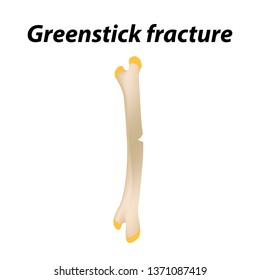Just When You Believe Relief Is Near, Soft Tissue Therapy Exposes Its Uneasy Facts-- Find Why The Procedure Can Be Unpleasant Yet Helpful
Just When You Believe Relief Is Near, Soft Tissue Therapy Exposes Its Uneasy Facts-- Find Why The Procedure Can Be Unpleasant Yet Helpful
Blog Article
Writer-Huffman Feddersen
When you undergo soft Tissue treatment, you may find it surprisingly awkward. This pain arises as stress is related to strained muscular tissues and broken cells, activating your discomfort receptors. While it can feel distressing in the moment, there's a reason behind this sensation. Recognizing what occurs in your body during these therapies can help you appreciate the procedure. So, exactly what is going on under the surface?
The Physiology of Pain During Soft Tissue Therapy
When you undergo soft Tissue treatment, your body's reaction to discomfort is an intricate interplay of physiological procedures. As lymphatic massage minneapolis uses stress, your body triggers discomfort receptors, sending signals to your brain. This activates the release of neurotransmitters, such as material P and glutamate, which amplify the experience of pain.
Your muscles may also tense up in response, further complicating the experience. Additionally, your body might launch endorphins, all-natural pain relievers that can help minimize some pain.
The interaction between these procedures can produce an one-of-a-kind experience for each individual. Comprehending this physiological response aids you browse the feelings during treatment, enabling you to value the equilibrium between discomfort and the possibility for recovery advantages.
The Role of Discomfort in the Healing Process
Although pain during soft Tissue treatment can really feel frustrating, it plays a critical duty in the healing procedure. When you experience pain, your body is signifying that it's working to repair broken cells. This feedback helps increase blood flow to the damaged area, supplying essential nutrients and oxygen needed for healing.
Additionally, discomfort can advertise the release of endorphins, your body's natural medicines, producing a feeling of alleviation post-treatment. Accepting this discomfort can assist you understand your body's restrictions and motivate you to resolve underlying issues.
While it's uncomfortable currently, this process is necessary for lasting recuperation and boosted function. Recognizing discomfort as an important part of healing can empower you to stay devoted to your therapy.
Tips for Taking Care Of Pain Throughout and After Therapy
Taking care of discomfort during and after soft Tissue treatment can dramatically improve your total experience and recovery.
To begin, connect honestly with your therapist concerning your discomfort levels; they can change techniques as necessary. Utilizing deep breathing methods can also assist you relax and reduce discomfort.
Think about applying ice to the cured area post-session to reduce inflammation and numb soreness. Remaining hydrated help in the recovery procedure, so consume alcohol plenty of water.
Mild extending and light movement after treatment can promote blood circulation and ease tightness. Finally, ensure you obtain adequate remainder to allow your body to heal.
Implementing these tips can make your soft Tissue treatment more workable and enjoyable.
Conclusion
To conclude, while soft Tissue treatment can be uneasy, it's crucial to recognize that this pain plays a vital function in your recovery journey. By comprehending the physiological responses at play, you can approach the treatment with a much more favorable state of mind. https://www.google.com/maps/place/Return+to+Play+Institute,+LLC+(Miami)/@25.726017,-80.26406,17z/data=!3m1!4b1!4m6!3m5!1s0x88d9b7b4207e8303:0xb1493a6e0d5a272b!8m2!3d25.726017!4d-80.26406!16s%2Fg%2F11lf8185yp?hl=en&entry=ttu&g_ep=EgoyMDI0MTAwOS4wIKXMDSoASAFQAw%3D%3D in mind, the preliminary pain often gives way to relief as your body releases endorphins. Welcome the procedure, and do not think twice to make use of the pointers for handling pain to improve your experience and recovery.
